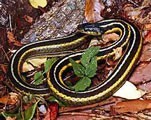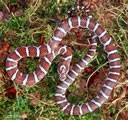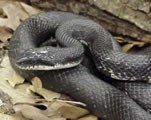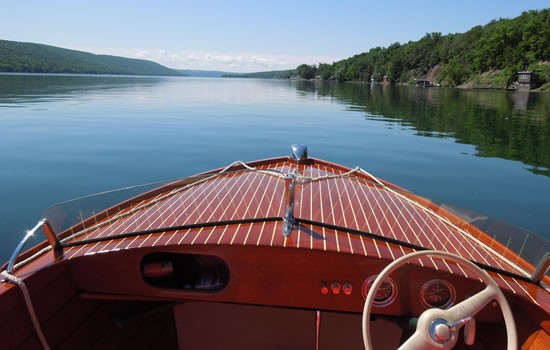― SNAKES ―
May witnesses two returns to the lake from winter hibernation: snakes and people. Snakes come out to warm up, breed, and eat. People come out to clean up their yards. Both activities occur in the same places - shorelines, brush piles, rock walls, and landscaping/shrubbery. So, in May, the KLA office gets a number of calls from concerned lake-dwellers who have come face to snout with snakes - what are the snakes, are they poisonous, are they dangerous, why are they there, and what to do about them.
First of all, not to worry. The three poisonous snakes of New York - timber rattlesnake, Massasauga rattlesnake, and copperhead - dwell mostly elsewhere, either west of Rochester or east of Syracuse (Massasauga rattlesnake), or in the lower Hudson Valley (copperhead). The timber rattlesnake is occasionally found along the southern tier of New York, including Steuben County. Favoring open rocky ledges in thicker woods, these snakes are unlikely lake-side dwellers.
Early in spring, female snakes like to lay out on rock walls and ledges where the sun's warmth helps warm the snakes and the eggs they lay (or the young developing inside them - some snakes bear their young live). After the young hatch/are born live, you'll see a lot, for a few weeks. Then, they get picked off by other predators or move out to find a home for themselves.
Snakes are also drawn to shorelines where the water is shallow and tadpoles, frogs, and small fish are easy to catch. Snakes also like brush and log piles because mice and other small mammals hide out in these places. Ditto for thick mulch, especially under shrubbery.

The most commonly-seen snake is the garter. The dark, greenish blotches and mustard yellow background are typical. This snake is aggressive and will strike at your legs if cornered. Often found along shorelines in brush, hunting frogs.

The ribbon snake is a skinny version of the garter and its bright yellow stripes set it apart. It's not as aggressive as the garter, and will run away rather than fight.

The water-snake is Mr. Nasty. Identified by the thick body and brown blotches, it will rush people and strike at them if cornered. These snakes are found exclusively around water edges and will not come upslope to your yard.

The milk snake is the prettiest snake you'll encounter. The bright orange blotches in a white background are a sure ID. These snakes are found along rock walls and ledges primarily, looking for mice and other snakes. They move slowly and will run rather than fight.

The black rat snake is the largest snake you may encounter, reaching 8' long. The only all-black snake. Rarely seen around lakes. Good to have around, they eat rats and mice.

The timber rattlesnake has the triangular-shaped head and dark brown blotches on tan. This snake is poisonous, but the bite is rarely fatal. Rarely seen around lakes.
What to do about snakes? Eliminate hiding and foraging cover by removing brush, log/lumber piles. Trim weedy edges close and often. If you encounter one, give it a little room and it will go away. They don't attack or bite swimmers.

